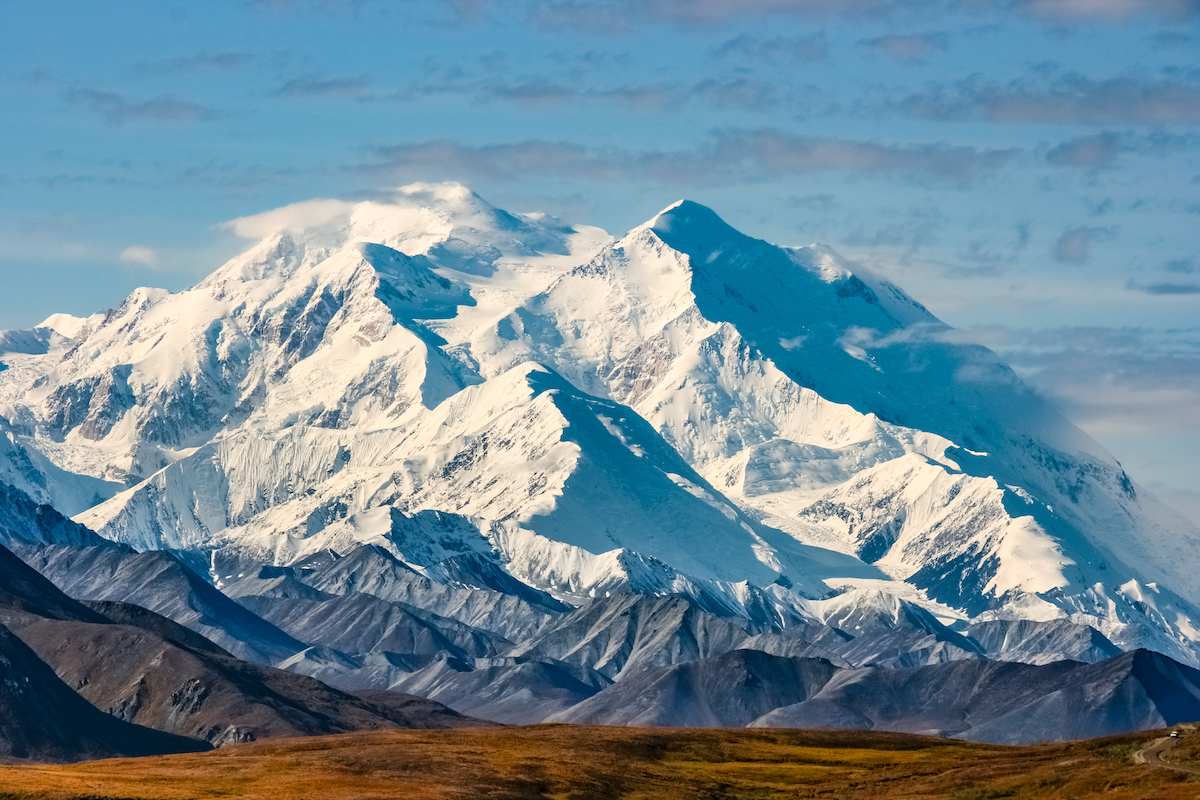America's Tallest Mountain Has a Serious Human Poop Problem

Why climb Denali? Because it's there.
Why carry your poop 14,000 feet (4,200 meters) up the mountain in a glorified coffee can before casting it into a deep crevasse? Because you have to.
According to a new set of waste-management regulations proposed this year, climbers who want to reach the summit of Alaska's Denali National Park and Preserve may dispose of their poop in just one location on the mountain and one location about 100 miles (160 kilometers) away, the Associated Press reported. The proposed rule changes were motivated by more than a decade of research conducted by National Park Service (NPS) researchers who found that glacial melt on the mountain is getting close to contaminating nearby water sources with distressing amounts of human fecal bacteria.
Standing about 20,000 feet (6000 m) above sea level, Denali (formerly known as Mount McKinley) is North America's tallest land-based mountain. More than 1,000 climbers visit every year, and according to Michael Loso, a glacier geologist at the NPS, these intrepid visitors leave behind more than 4,400 lbs. (2 metric tons) of human waste every year. [Inside The World's Tallest Mountains]
That's a lot of poop — and the numbers look even worse when you take a historical view. According to an NPS report, climbers left behind somewhere from 152,000 to 215,000 lbs. (69 to 97 metric tons) of feces on the mountain between 1951 and 2012. Most of this waste is confined to crevasses on the West Buttress of Kahiltna Glacier, a popular pathtoward Denali's summit.
Park officials have been conscious of the waste problem for a while. Beginning in 2007, new NPS regulations asked each climber trekking above the mountain's 14,200-foot (4,300 m) Camp Four to capture their waste in a Clean Mountain Can, a 1.88-gallon polyethylene container designed to hold 10 to 14 bowel movements.
Climbers were encouraged to empty these cans into deep crevasses across the glacier, with the expectation that the waste would freeze and decompose.
Get the world’s most fascinating discoveries delivered straight to your inbox.
According to Loso's research, however, the poop isn't decomposing. As part of his decade-long waste-management research, Loso buried human waste in the glacier, then dug it up a year later. He determined that crevassed stool was not reaching the subfreezing temperatures or being exposed to the ultraviolet light necessary to kill bacteria.
And thanks to glacial melt, this contaminated waste could one day enter the Alaskan watershed.
Denali's West Buttress climbing route is located in Kahiltna Glacier's accumulation zone, the region of a glacier where annual snowfall exceeds annual melt. Because of this, crevassed waste gets buried deeper and deeper under snow every year, where it will eventually turn to ice and flow downhill. Inevitably, this cache of old waste will melt out at the glacier's surface, possibly contaminating the Kahiltna Riverthat flows from the glacier's melt zone.
Indeed, Loso and his colleagues found trace amounts of fecal bacteria in Kahiltna River during water tests conducted in 2011 and 2012. According to the NPS, the contamination was very small and still within Alaska's state water-quality standards. Regardless, Loso's findings motivated park officials to revise their waste-management rules.
According to the proposed rule changes, climbers may dispose of the waste stored in their Clean Mountain Cans at one of two places: at the Talkeetna Ranger Station, located about 100 miles (160 km) south of the entrance to Denali National Park, and in one crevasse located above the 14,200-foot (4,300 m) Camp Four. Dung dumped into this crevasse will drop down a huge cliff and is "likely to be pulverized" in the fall, the AP reported.
Originally published on Live Science.

Brandon is the space / physics editor at Live Science. With more than 20 years of editorial experience, his writing has appeared in The Washington Post, Reader's Digest, CBS.com, the Richard Dawkins Foundation website and other outlets. He holds a bachelor's degree in creative writing from the University of Arizona, with minors in journalism and media arts. His interests include black holes, asteroids and comets, and the search for extraterrestrial life.


